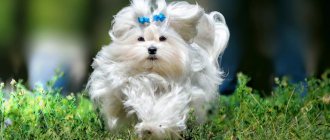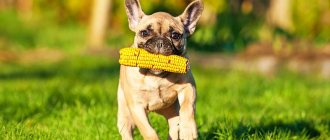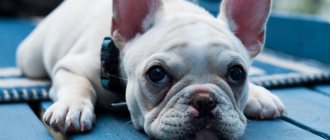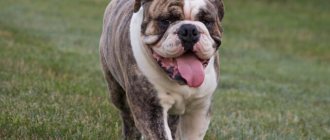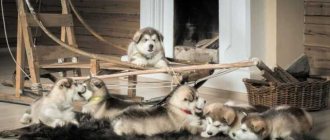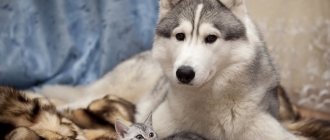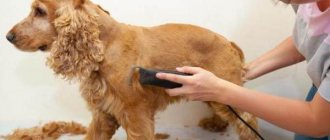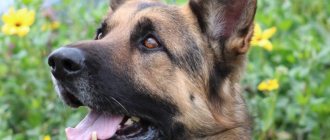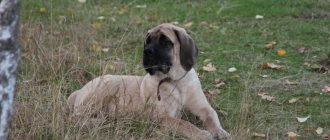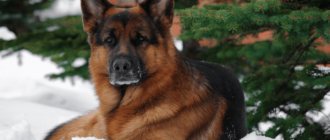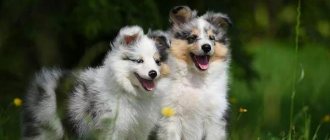The Havanese Bichon or Havanese is a small decorative dog from the group of lapdogs. She resembles an adorable plush toy, but has a perky character and an extraordinary mind. This is an ideal pet for a city apartment, for inexperienced dog breeders. He is good-natured, sociable, loyal, and easy to train. But before you get a Havanese Bichon, you need to study the description of his character. Reviews from owners and videos about these dogs will help you better understand the pros and cons of keeping them.
- Head
- Education and training
- Care
Description of the Maltese breed
Popularity 64th place among 263 dog breeds
Lifespan:
12-14 years old
Breed group:
Decorative
Height:
males: 21-25 cm, females: 20-23 cm
Country of origin:
Italy
Average price:
25-35 thousand rubles
Weight:
3-4 kg
Latest articles Cat health
Ataxia in cats: what is it, how does it manifest and is treated 01/23/2022 163 0 0
Cat health
Leukemia, or viral leukemia in cats 01/23/2022 148 0 0
Breed traits
Breed traits (on a 5-point scale)
| Havanese Bichon (Havanese) | |||
| Activity | in the house | 3.5 | |
| on the street | 3 | ||
| Obedience | training | 2.5 | |
| strangers | 3 | ||
| Domination | in family | 4 | |
| over dogs | 3 | ||
| Defending your territory | from people | 1.5 | |
| from dogs | 3 | ||
| Sociability | in family | 4.5 | |
| with strangers | 4 | ||
| with dogs | 4 | ||
| Concentration | in family | 2.5 | |
| in front of strangers | 2 | ||
| with dogs | 3.5 | ||
| Aggressiveness | in family | 3 | |
| to strangers | 3 | ||
| to the dogs | 2 | ||
| to cats | 2 | ||
| Family behavior | calmness | 3 | |
| demand for affection | 3.5 | ||
| excitability | 2.5 | ||
| playfulness | 3.5 | ||
| excessive barking | 1.5 | ||
| behavioral breakdowns | 2.5 | ||
| Tolerance for children | up to 4 years | 4 | |
| over 4 years old | 4.5 | ||
| Institutional use | watchman | 2.5 | |
| bodyguard | 2 | ||
This breed is often compared to the following dog breeds: Maltese (Maltese Bichon), Tibetan Terrier, Bichon Frize, Shih Tzu, Labrador Retriever.
The photo shows what a Havanese Bichon looks like:
Key facts
The name of the breed Maltese can be replaced by another name - Maltese. It is believed that representatives of this breed cannot have abbreviated names, but the owners do their best to make their pet stand out from other dogs. Fluffy clouds respond best to short, sonorous calls.
The Maltese's country of origin is Italy, and this may explain the temperament of these dogs. Sociability, a sharp mind, a desire to get a dose of attention - all these characteristics of the Maltese breed have made them the center of attention of the whole world.
Females and males are equally reluctant to train.
Pets often participate in the therapy of people suffering from depression due to their friendliness, peacefulness, sensitivity of character, and ability to adapt to the owner’s mood. The animal does not like loneliness, so it is not recommended to leave the fluffy cloud for a long time.
Despite their loud voice, which is often used for other purposes, the Maltese is completely unsuitable for the role of a guard. The only thing they will be capable of if they meet a robber is to wag their tail touchingly or ask them to pet themselves. The description of the Maltese breed clearly states that it will not make a guard dog.
The Maltese's small size makes them ideal city dwellers. The height (height at the withers) of an adult is 21-25 cm for males, 20-23 cm for females; average weight – 3-4 kg.
The lifespan of Maltese dogs is long: dogs live from 12 to 15 years.
The price of a Maltese dog starts from 25,000 rubles. Keeping a pet cannot be called expensive: the main expense items will be the purchase of high-quality food, cosmetics for the coat, visiting a groomer, and paying for exhibitions (if you want to breed puppies).
Price
You can buy or standard Maltese dog They differ from each other not only in size, but even in the thickness of their fur and characters. A puppy of this breed at the age of 2-3 months will cost its owner from 30 to 80 thousand rubles.
Many factors will influence its formation. For example, gender, class and the presence of pedigree or any defects in the puppy. The price of a Maltese dog will depend on all these factors. You can buy this dog for yourself or as a gift.
History of the origin of the Maltese dog
Snow-white fluffies are long-time neighbors of humans, although the place and time of their origin remains a mystery. Scientists have identified three possible hypotheses. One claims that it is impossible to trace the origins of this breed; another says that the first owners of the Maltese were the ancient Greeks; the third considers Egypt the supposed homeland of miniature dogs.
According to the second theory, the Maltese is an incredibly ancient breed that lived side by side with the ancient Egyptians. This can be confirmed by elegant clay figurines depicting similar animals, as well as drawings on the walls of tombs. Perhaps fluffy animals were revered by the Egyptians on a par with jewelry or expensive fabrics.
Another theory suggests that dogs appeared a little later. In the Adriatic, two islands neighbored each other, sharing the same name - Melita. Dogs similar to the Maltese were described by local merchants who could afford to breed a similar breed.
In addition, it is believed that the fluffy dogs could have come from the Swiss Alps.
Maltese dogs quickly spread throughout the world. Not yet identified as a separate breed, the dogs traveled with merchants. The first “stop” was Ancient China – the visit dates back to the first century BC. Residents of the Middle Kingdom loved unusual animals, so they easily exchanged expensive silk for fluffy dogs. Then the dogs spread throughout the Asian part of the mainland, and then throughout the European part.
The Middle Ages cannot be imagined without paintings depicting nobles with white pets. The French and Italians especially liked miniature dogs.
But the fashion for cute dogs was not widespread: for example, the British first became acquainted with the Maltese only when Queen Victoria ascended the throne.
During the First World War, white fluffies had a hard time. Accustomed to living in rich houses, the animals were forced to survive on the streets, eating whatever they could, which led to widespread mortality.
The situation improved by the mid-twentieth century, when the whole world managed to “lick” its post-war wounds: graceful dogs reappeared in England. From that moment on, the breeding of lapdogs was thoroughly taken up: in the thirties of the twentieth century, the first club of the Maltese breed was created.
The Second World War could have broken the delicate balance, again putting the Maltese on the brink of extinction, but some breeders managed to preserve individuals with a good gene pool. The first exhibition was held only when the number of representatives of the breed could reach the pre-war level.
Maltese dogs appeared in the USA only in 1888, in Russia - closer to the collapse of the USSR. Today, Maltese are considered one of the most common hypoallergenic dogs.
Appearance of a Maltese dog
General impression
What do Maltese dogs look like? Miniature size, elegance and smoothness of shape characterize dogs of this breed, regardless of the species (more precisely, the standard by which dogs are allowed for breeding). In the photo, the Maltese looks proud and elegant.
Head
The small head (one-half the height at the withers) is quite wide. The muzzle with weakly defined cheekbones is slightly shorter than the egg-shaped skull, which is flat on the top of the head. The stop is well defined.
Triangular ears are set high and slightly raised. They move actively if the animal is interested in something.
The expression of the round eyes, colored with brown pigment (various shades of this color are allowed), is intelligent, understanding, and a little arrogant. The whites of the eyes are not visible. Tightly fitting eyelids are dark. The nostrils of the black nose are open.
The equally well-developed jaws close tightly. Scissor bite. The edges of thin black lips allow you to see the oral mucosa.
Neck
The neck is quite long, curved at the top, and abundantly covered with hair. From the occipital side the outlines are clearly visible. The neck allows the animal to hold its head up.
Torso
The body is about a third longer than tall. The back is straight, with slightly raised withers. The girth of the wide chest is two-thirds of the height of the Maltese. Goes down to the elbows. The ribs are faintly visible. The croup is wide and elongated.
Forelegs
The paws are set straight, parallel to each other; the bones are dense. Forearms move freely. They look hot. The paws are rounded, the toes are gathered into a ball. Soft pads, evenly pigmented claws are black.
Hind limbs
The long hind legs standing parallel to each other are more muscular than the front ones. The thighs are powerful and the muscles are well developed. The bones are strong, the hock joint is well defined. The rounded paws gather into a ball. The pads may be harder than those on the front feet. The claws are black, evenly pigmented.
Tail
The high-set tail becomes thinner towards the tip. Arched, bends over the back. The standard requires contact with the croup. An animal with a tail bent to the side will be accepted for exhibition, but this option is undesirable.
Movements
Maltese dogs walk smoothly and evenly. The stride length is medium or short. While running, the animal actively pushes with its hind legs, which helps to quickly strengthen its muscles.
Wool
White fur covers the body abundantly. The texture of straight, smooth hair is silky. The cover fits well to the body and does not separate into strands. The hair on the head is long. Curly hair all over the body is considered a defect and is punishable by exclusion from breeding. There is practically no undercoat.
Color
White coat color is considered ideal for the Maltese, although for a long time the standard allowed various shades, mixtures of different colors. Colors of the Maltese in shades of ivory are acceptable.
Dimensions
There are three types of Maltese dog standards:
- The Fédération Cynologique Internationale standard implies the following parameters for dogs: a boy grows to 21-25 cm, a girl – 20-23 cm; maximum weight of a Maltese dog is 4 kg;
- American Kennel Club - individuals weigh up to 3 kg. The growth of Maltese dogs is the same as that of bitches according to the FCI standard;
- British Kennel Club - the dog should not be taller than 25 cm; the weight is the same as that of individuals according to the FCI standard.
The size of a dog does not affect character traits: dogs will behave the same.
Appearance Standards
The Havanese Bichon has an adorable toy-like appearance. This is a small, proportionally built dog with long, silky hair. The body is strong and stocky. According to the standard, the height of a Bichon is on average 23-27 cm, and its weight can be no more than 6 kg.
Head
The head is medium in size, proportional to the body, almost square in shape. The forehead is wide, the stop is smooth. The muzzle tapers moderately, neither narrow nor blunt. Its length is equal to the length of the skull. The cheekbones are flat, the jaws are strong, with a scissor bite. The lips are thin and close fitting. The nose is well pigmented and can be black or brown.
The eyes are almond-shaped and large. The iris is dark in color. The look is smart and friendly. The ears are set high and wide, covered with long hair. They hang down and fit tightly to the head.
Frame
The physique is dense, stocky. Rectangular body. The neck is long, smoothly blending into the withers. The back is straight, slightly convex in the lower back, the croup is inclined. The chest is wide, the stomach is tucked. The tail is long and set high. The dog throws it on its back or lifts it up, folding it into a half ring. The tail is covered with long hair.
Limbs
The limbs are short, straight, set parallel. The front ones are slightly shorter than the rear ones, which affects the Bichon’s gait - it is graceful, springy, with its head held proudly. The paws are compact, with tightly knit toes.
Coat and color
Like all lap dogs, the Havanese's coat is thick and long - up to 18 cm. It forms feathers on the ears, tail, and limbs. The wool is silky and soft to the touch. The guard hair can be straight or slightly wavy, sometimes forming ringlets and curls. The undercoat is fluffy and sparse, and may be completely absent. The standard prohibits cutting or trimming the hair on the body.
The color of the Havanese Havanese can vary. While the ancestors of these dogs were mostly white, this color is now rare. The following colors are common:
- cream;
- black;
- pinkish beige;
- sable;
- chestnut;
- reddish brown;
- tobacco color;
- silver.
Any color variant may have white spots. They are usually located on the chest, limbs, and around the nose.
Photos complement the description of the appearance:
Personality of the Maltese
Who is a lap dog suitable for? Maltese are representatives of decorative breeds whose sociable traits are clearly expressed. Cheerful, friendly, active, the dog is ready to be devoted to one owner, even if there are many other people around. The fluffy dog demands the same from the owner: barely noticing the “betrayal”, the dog can cause mischief.
The mischievous lapdog sees other animals as companions for energetic games, which is different from many decorative breeds: a dog or cat in front of her doesn’t matter, the main thing is to throw out the accumulated energy.
Maltese dogs are often adopted by families with small children. Dogs of this breed are really suitable for the role of nannies; they do not mind playing with children. But when leaving the animal alone with the baby, you should take into account that an impatient Maltese can easily bite a child that is boring her, despite her good disposition.
Adult Maltese dogs are either terrified of strangers or do their best to scare them away from their home. Don't be surprised if you hear about the arrival of guests by a furious iridescent bark. The white fluffy puppy is suspicious of the owner's friends: he will never accept a tasty treat from someone else's hands, and will turn away if they want to pet him, if the puppy is not accustomed to this at an early age.
If you get a dog of this breed, be prepared to face the stubbornness of the furball. At home, an animal can behave affectionately, but, for example, on the street it can act worse than some ill-mannered shepherd dog: break free, bark loudly.
The restless nature of the Maltese dog, on the one hand, is its undeniable advantage (the animal will turn frequent intensive walks on the street into a colorful show), on the other hand, it is a disadvantage. An animal left alone for more than an hour can turn the whole house upside down, since a long absence of the owner is a stressful situation for the furball.
Living side by side with a Maltese dog is an interesting challenge. The world with such a pet will only become more interesting and brighter.
Lesser Lion Dog (Levchen, Bichon Lyon)
The most unusual breed among the Bolonki, which may not even have relatives among the Bichons, but belongs to their section in the decorative group. Cynologists believe that Levhens appeared in the 2nd century from the mixing of Epagnoles and Great Danes. The demand for animals fell and grew, by 1960 the breed was listed in the Guinness Book of Records as the rarest, and in 1961 the International Film Festival recognized the Small Lion Dogs.
The exterior of the breed is still being improved: French cynologists find individuals similar to true pristine Levchens and breed them, paying special attention to the format of the head.
Unlike other lap dogs, lion dogs have a square skull and a square body. They are much larger than the Maltese or Frize, growing up to 32 cm. Their coat is long, straight, and fluffy. It can be black, brown, gray, piebald, red, with white stripes. Dogs are cut so that they resemble lions: bare torso and hind limbs, feathering on the head, neck, chest and tip of the tail.
Indoor decorative dog with a bright exterior and a gentle character. This is a real family pet: unobtrusive, calm, loving. Levchens learn quickly, are not lazy and active. The average cost is 15,000 rubles.
Education and training
Raising and training a Maltese dog is not an easy task due to such character traits as stubbornness and indiscipline. At the same time, lap dogs are smart and reserved. Royal-looking dogs require this kind of treatment, and owners sometimes overindulge their pets. It is worth understanding that education is one of the main points in preparing a Maltese puppy for socialization.
The first step is to establish an emotional connection with the pet: only realizing that the owner does not want to harm him will the pet make contact. It is strictly forbidden to abuse an animal or apply physical punishment to it. Do not forget about the carrot and stick method, the reward for completing the exercise - Maltese are ready to do anything just to get a tasty treat, for example, a dog biscuit.
How to raise a Maltese? It is recommended to begin the first training only after the final connection between the puppy and the owner has been established. This usually occurs around two months of age. First, you need to train the dog to respond to its name; without this, performing slightly more complex exercises (for example, the commands “sit!”, “lie down!”) becomes more difficult.
Training in fetching and complex commands begins after mastering the basic elements.
Is it possible to attend group training at canine centers? Such events are only suitable for dogs that have mastered the basics and control themselves - already educated and trained, who have mastered the command “come to me!” Usually Maltese dogs go there, often participating in exhibitions.
In summer, spring and autumn, you can exercise in nature - this will help the furball learn not to be distracted by the external environment. In winter, it is better to avoid this practice.
Maltese Health and Diseases
Possible diseases
White Maltese are the owners of truly good health. Provided it receives all the necessary nutrients, adheres to the daily calorie intake, and takes daily walks in the fresh air, the dog will delight its owner for the required twelve to fifteen years. But not everything depends on these factors, and sometimes the animal exhibits genetic diseases.
Dogs of this breed often visit the veterinarian due to eye diseases, inflammation of the skin, and ears. In addition, you should monitor the condition of the cardiovascular and digestive systems. If dietary recommendations are not followed, the animal may develop obesity or food allergies.
The following diseases are typical for Maltese dogs:
- glaucoma;
- retinal atrophy;
- blindness;
- blocking tear streams;
- diastasis;
- pyloric stenosis;
- dermatitis;
- cryptorchidism;
- deafness;
- stroke.
The Maltese's joints are rarely treated due to the animal's miniature size, but in some individuals the kneecap may dislocate. Hydrocephalus leads to stroke.
It is important to monitor the oral health of your little furry. Despite the fact that dogs' teeth are very strong, it is important to prevent the occurrence of caries and tartar, since the treatment of this kind of disease is quite expensive.
Dogs of decorative breeds are more susceptible to cancer than other animals. Blood cancer and pancreatic cancer are common among Maltese dogs. These diseases are typical for bitches from 12 to 15 years old. Cancer cannot be prevented, but if diagnosed early, the chance of recovery doubles or triples.
Reproductive health
The issue of pregnancy and childbirth is sensitive. A female dog's first heat occurs at the age of one year. It is not recommended to breed her with a male dog during this period, since there is a high risk that the body has not completed its formation, and the offspring will be born either premature or dead.
Planning a pregnancy should start with determining expenses. The cost of mating with a male dog is taken into account (the higher the cost, the higher the title of the future father), maintenance of the puppies after birth, a visit to a veterinarian who, at the age of one month, will examine the physical condition of the babies and give them vaccinations.
What to feed a nursing dog and puppies is also worth considering. If at the time of pregnancy planning the owner realized that it was too expensive for him, sterilization would be the best solution. This way the bitch's life can be made easier.
Features of feeding and diet
What to feed your Maltese? Nutrition for small breed dogs is an important issue, since the animal’s health directly depends on its quality. The choice of type of food (food or natural) for an adult dog depends on the owner’s capabilities, availability of free time and knowledge in the field of nutrition.
A one-month-old puppy begins to receive food along with its mother's milk. At the age of two months, the puppy is completely transferred to solid food. What food the breeder will provide depends on the budget and needs of the puppy. Vitamin supplements are often found in the diet of puppies.
Having taken the puppy home, the owner either continues to feed him the food introduced in the nursery, or consults with a veterinarian on this issue. Typically, Maltese dogs receive food for small breed dogs with weak digestive systems, since gastritis and gastric erosion are quite common in them. Is it possible to feed fruit on feed? You can, but only in the form of a treat.
A natural diet requires awareness of the energy needs of the animal’s body, knowledge of BZH standards for a particular age (this information can be found in the puppy feeding guide or in the feeding guide for an adult dog).
Natural nutrition includes meat, offal, fatty sea fish, whole grains (buckwheat, brown rice), fresh vegetables and fruits (except citrus fruits, because many individuals are allergic to this category of products), fermented milk products (kefir, yoghurts, cottage cheese). Sometimes small amounts of nuts are allowed if there is a lack of healthy fats in the diet.
How many times should I feed my white fluffy? Up to six months, puppies are fed five to six times a day in small portions. A six month old puppy gets three meals every day. An adult dog eats twice a day. The animal must have cool water freely available.
Bolognese (French lap dog)
It is strange that the breed is called the French lapdog, when its actual homeland is Italy, the city of Bologna, which is where the first name came from - Bolognese. Most likely, the dog's closest relatives are the Maltese and the Poodle. The animals came to Russia as a gift from Catherine the Second. The confusion in the names is explained by the similarity between Bolognese and Bichon Frize.
The main difference between the breeds is the texture of the coat. While the Bichon has corkscrew curls, the Bolognese has loose, wavy or curly hair.
Small dogs (up to 30 cm at the withers) with a cheerful character. These are true optimists with an easy, stylish gait and high self-esteem. These dogs never lose heart. The family is friendly, but they do not like strangers, although they never show aggression. The average cost of puppies is 30,000 rubles .
Maintenance and care
Keeping and caring for the Maltese, like other small breeds, is not an easy task, since they require special attention to the organization of space. However, the Maltese will feel good not only in a country house, but also in an apartment, as long as he has his own well-equipped corner. A soft, cozy bed with a blanket, small rubber toys, nearby bowls of water and food - a miniature lap dog doesn’t need anything more.
How to care for a furball? First, you need to understand that due to the high risk of eye and ear diseases, special attention is paid to them. The eyes are washed daily with boiled water. The ears are cleaned as needed using cotton swabs.
Maltese dogs are a long-haired breed of dog, and their thick, well-groomed coat is their source of pride. Dogs need to be combed daily, carefully removing any tangles that have formed, and bathed twice a month or more often.
Nails should be trimmed after bathing with scissors specially designed for this purpose, which resemble pruning shears. Most often, this procedure is carried out in winter, when the dog does not have the opportunity to grind his claws off on the asphalt.
Maltese dogs are considered suitable dogs even for allergy sufferers, since they do not have the characteristic odor of dogs, and shedding occurs once a year or does not “come” at all. However, before purchasing, you should make sure that there is no allergy to the animal’s saliva.
If the owner does not have time to carry out these procedures on his own, then groomers come to the rescue. Grooming is a range of dog care services, including bathing, trimming hair and claws, cleaning the eyes, ears, and mouth (dental care is important!). The groomer is visited by both pets and show regulars.
How to buy a Havanese puppy
To buy a purebred Havanese, you need to contact a nursery. This breed is not very common in Russia, but a responsible breeder can be found. The average price of a puppy is 30-70 thousand rubles. If a dog is offered cheaper, it may be a mixed breed or an animal with genetic pathologies.
When choosing a puppy, you need to pay attention not only to the presence of all the necessary documents. It is important to study the living conditions of animals, compliance with standards, behavior and health of babies.
A healthy Havanese puppy should be playful and curious. He has a moist, well-pigmented nose, a soft shiny coat without bald spots or dandruff, and his eyes are not bulging and have no discharge.
The photographs show what the puppies should look like:
The video complements the characteristics of the breed:
Video: Havanese Bichon
Havanese Bichons are decorative dogs. They are person-oriented and need constant contact with him. They are easy to train, loyal and obedient. But you should not get this lapdog for those who are often not at home or who are not ready to devote a lot of time to their pet. When alone, the Bichon will become very sad and may start acting out and ruining things. But in response to affection and attention, he will give his love and brighten up loneliness.
Tips for choosing a puppy
How to choose a puppy? What should you pay attention to initially?
Choosing a puppy is a complex “procedure” that needs to be treated with scrupulousness. Due to the relative popularity of the breed, there is a high chance of buying an individual that does not meet the standard (usually the cost of such puppies is suspiciously low).
To be sure that you are purchasing a Maltese dog, you can consult a dog handler or a breeder from a third-party nursery. The specialist will advise you to pay attention to the condition of the animal’s fur (light curls are allowed, but the color must be white), the volume of the chest, bite, and the condition of the mucous membranes of the eyes.
In addition, he will evaluate the living conditions of the entire litter, make sure the adequacy of the parents, and check the package of documents (puppy birth certificate and veterinary passport - a mandatory kit for participation in breeding). Maltese puppies are distinguished by their increased cuteness, but this should not be the main selection criterion.
Possible diseases
In general, the dog is in good health. The first months of an animal’s life are considered the most dangerous period, since you need to monitor your Maltese puppy . First, get your blood sugar levels under control. If you lose sight of this, then as the dog matures, the tracheal cartilage will become weaker, which will lead to problems in the respiratory system.
Because of this, it will not be possible to wear a collar. In addition, you need to make sure that no one steps on or squeezes the new little resident of the apartment or house. Because they are very fragile in childhood. The most common health problems for this dog are:
- Dental.
- Dislocation of the knee joint and cap.
- Glaucoma and retinal atrophy.
- Predisposition to liver diseases.
- Blocked tear ducts.
Another interesting feature of the Maltese is the uncontrollable trembling of the whole body. Because of this problem, the dog practically stops moving normally. Veterinarians are trying to treat this disease with medication.
